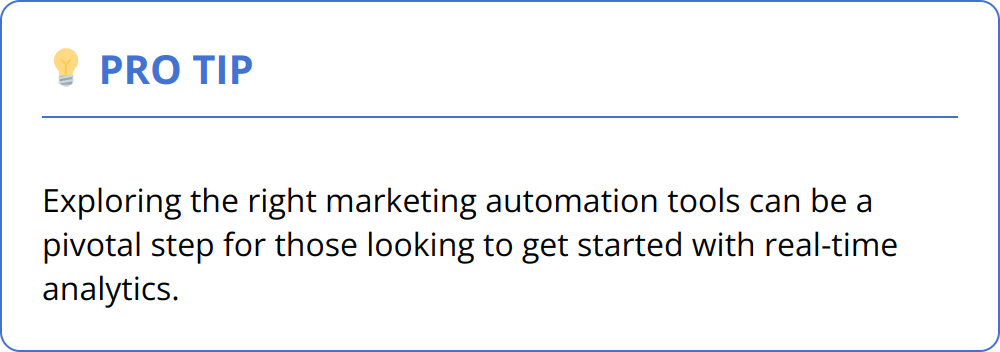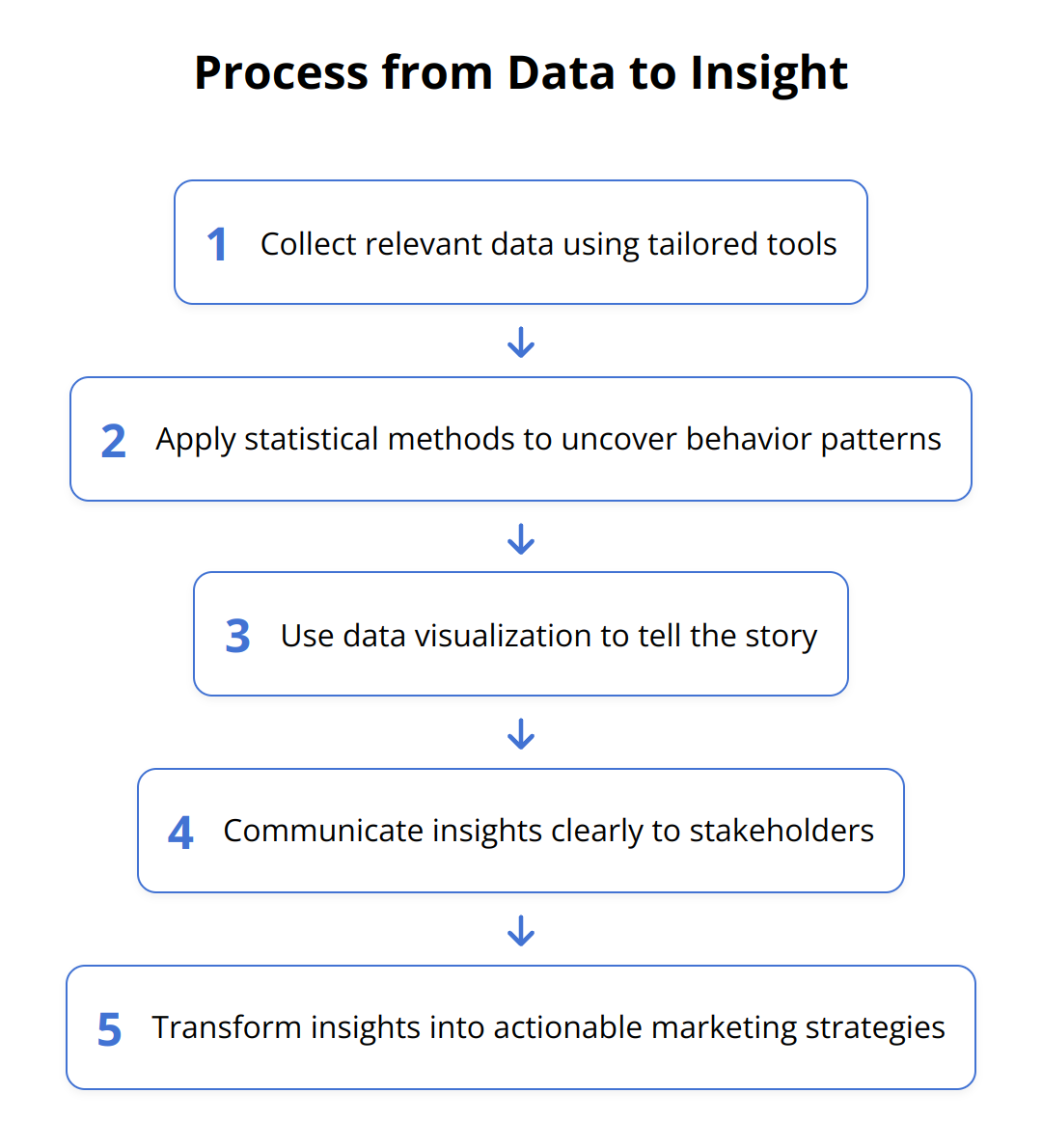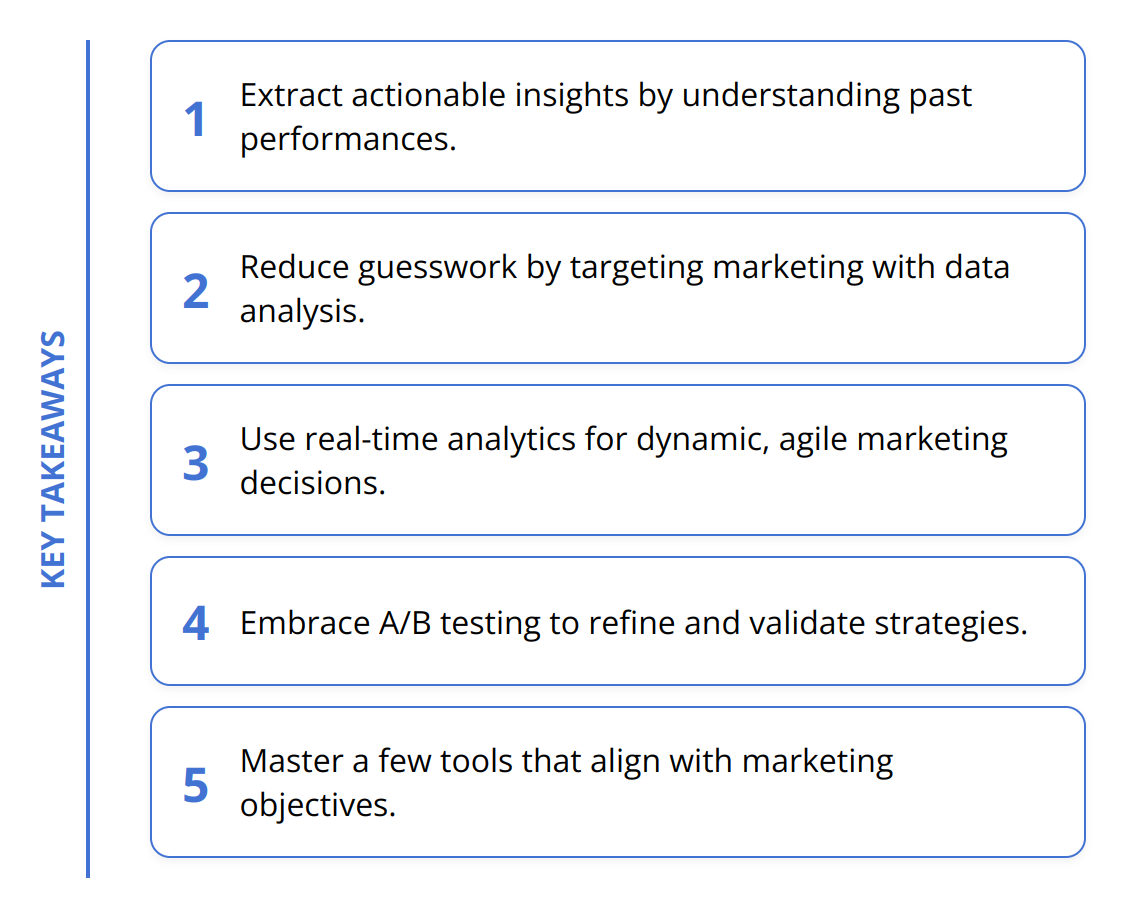Data analysis is the heartbeat of informed marketing strategies. At its core, it’s about turning numbers into narratives that can steer a business in the right direction.
We at Emplibot understand the transformative power of effectively interpreting marketing data. Join us as we unpack the essentials of data analysis in marketing research and how you can apply it to forge winning strategies.
Making Sense of Marketing Data Analysis
Marketing data analysis is all about extracting actionable insights from a wealth of information. It’s the process of dissecting both numbers and text to learn from past performance, predict future trends, and build strategies that resonate with target audiences. In marketing research, data analysis is not just a number-crunching exercise—it’s a strategic compass that guides all subsequent actions.
Transforming Data into Strategy
Marketers today have access to a vast array of data types. Behavioral data tells us how customers interact with brands, while demographic data paints a picture of who the customers are. Psychographic data provides insights into attitudes and lifestyles, and transactional data reveals purchasing patterns. Each dataset serves as a piece in the puzzle that forms a complete understanding of the market.
However, having data is only part of the equation. The more vital aspect is interpreting this data correctly. Patterns and correlations can suggest which marketing channels are most effective, inform the development of personalized experiences, and pinpoint areas where expenditure is not delivering results. In short, data analysis backs every decision with evidence, making marketing an intelligent investment.

Shortening the Loop from Analysis to Application
We live in an age of agile marketing where adaptation is swift. Leveraging the right tools and methodologies for data analysis is indicative of a brand’s ability to stay ahead. Real-time analytics allow for a dynamic approach, enabling marketers to make quick decisions based on current data trends. This can be especially crucial for time-sensitive decisions like tweaking the campaign for an upcoming sale or product launch.
For those looking to get started with real-time analytics, exploring the right marketing automation tools can be a pivotal step.
Strategic application of data analysis also involves constant testing and refining. A/B testing, for instance, is a marketer’s best friend—it’s a straightforward way to compare different strategies and see which one works best. It’s a practice grounded in data, but applied with a keen eye toward understanding and engaging customers.

Here are a few numbers that underscore the significance of marketing data analysis:
-
Businesses that adopt data-driven marketing are more likely to have an advantage over the competition and are six times more likely to be profitable year-over-year. – Forbes
-
64% of marketing executives “strongly agree” that data-driven marketing is critical in the economy. – Forbes
The Outcome
Strategy formulated without data analysis is akin to shooting in the dark—there’s an outside chance of hitting the target, but it’s far from guaranteed. Data analysis enables marketers to target their efforts like a precision-guided missile, drastically increasing the likelihood of hitting the mark.
In essence, the role of data analysis in marketing research is clear—it separates guesswork from strategy, ensuring that marketing investments are made in the right places at the right times for the right audience.
For anyone in marketing looking to leverage the full spectrum of data analysis, it’s imperative to integrate both quantitative and qualitative customer data. This data symbiosis forms a solid foundation for a robust marketing strategy that’s not only based on solid data but also keen on providing real value to the customer. With such an approach, your strategy will not be just data-informed but also customer-centered, and that’s a powerful combination.
Harnessing Data Analysis Tools
Navigating the extensive world of data analysis can be overwhelming, but selecting the right tools and techniques is essential for lifting the fog of data overload and pinpointing precise marketing insights. Here’s a granular look at how marketers can extract the most juice from their data.
Choose Your Arsenal Wisely
Seamlessly sifting through massive amounts of data demands robust software solutions. Marketers favor platforms like Google Analytics for tracking website engagement, while CRM systems such as HubSpot provide deeper insights into customer interactions. Advanced tools like SAS or Tableau empower users with comprehensive data manipulation and visual reporting capabilities.
Remember, the key is not to amass tools, but to master the ones that perfectly align with your marketing objectives.

Powerful software is useless if it does not add clarity to the decision-making process or if it’s too complex for your team to utilize effectively.
Deciphering the Numbers
When it comes to statistical methods, marketers don’t need to be statisticians, but a firm grasp of basics like regression analysis can reveal which variables influence customer behavior. Conducting cohort analysis can demonstrate how particular groups of customers behave over time, offering insights into long-term trends and loyalty patterns.
On a more intricate level, conjoint analysis helps predict customer choices based on various product attributes, which is invaluable for product development and positioning. These techniques turn bland numbers into compelling evidence that can fortify a marketing strategy.
Visual Storytelling
Data visualization is not just about making pretty charts; it’s about telling a compelling story. Techniques like heatmaps show where users are clicking on a webpage, whereas Sankey diagrams can illustrate the flow of users across different stages of the marketing funnel.
For an in-depth exploration of the impact of visual storytelling, the article automated reporting tools is an insightful read. Using well-crafted visuals, marketers can convey complex data in a format that’s immediately clear to stakeholders at all levels. It’s about simplifying the complex without losing the nuance.
Applying these tools and techniques effectively in your marketing research is not just about gathering data; it’s about establishing a vital connection with your audience.

By doing so, you root your marketing campaigns in solid ground, ensuring that every creative leap is backed by solid data-driven footing. Keep these considerations at the forefront:
-
Match your tools to both your needs and your capability to use them.
-
Embrace statistical methods that reveal the story behind customer behavior.
-
Use visualization not just for aesthetic appeal, but to clarify and communicate insights effectively.
And always remember, the goal is to transform data into actionable insights, not collect it for its own sake. Your focus should be as much on applying what you learn as it is on the learning itself. The journey from data to insight to action should be as seamless as a well-oiled machine, with your chosen tools and techniques acting as the cogs that keep the gears turning.
Translating Data to Decisions
When it comes to the vast sea of marketing data, it’s not just about swimming in information—it’s about fishing out the best insights to fuel your business strategy. This critical transformation is where many marketers excel or flounder. Getting from raw data to a finely-tuned decision-making process means using analysis to illuminate the path forward.
Discovering Actionable Insights
To turn analysis into action, marketers need to sift through the noise and hone in on what matters. Here’s where practical steps become golden:
-
Pinpoint KPIs that align with business goals.
-
Identify patterns that reveal the effectiveness of marketing channels.
-
Analyze customer feedback to refine products and services.
-
Gauge campaign performance to allocate budgets wisely.
For instance, if engagement rates are the chosen KPI, data analysis might reveal that instructional videos rather than blog posts are driving your audience’s interest. This insight directs you to pivot towards creating more video content to enhance engagement.
Success Stories from the Trenches of Marketing
Powerful insights are best showcased through real-world successes. Consider Airbnb’s tactic of utilizing big data to personalize user experiences, which improved their engagement and bookings. They analyzed everything from searching patterns to the amenity preferences to tailor their listings and suggestions. This strategic use of data bolstered their market position and became a cornerstone of their marketing strategy.

Another example is Netflix’s use of predictive analytics to not only recommend movies to users but to decide which new series to produce. Their data-driven approach has led them to create hit shows that match viewer preferences and has redefined content creation within the entertainment industry.
Navigating the Data Interpretation Minefield
Marketers wade into the territory of data interpretation every day. Yet, it’s fraught with potential missteps:
-
Overlooking context when interpreting data can lead to misguided strategies. Data without context is like a rudderless ship.
-
Ignoring qualitative data can blindside a marketer to the “why” behind customer behaviors.
-
Cherry-picking data to support a narrative can lead one astray. It’s imperative to take a holistic view to paint an accurate picture.
Let’s say your data show a spike in social media engagement after a specific campaign. Without considering context such as a coinciding viral trend, you might misattribute success entirely to your campaign efforts rather than a mix of factors.
Takeaways for Data-Driven Decision-Making
As you shift from collecting to applying marketing data, remember:
-
Be disciplined in interpreting data within its context to inform accurate decision-making.
-
Balance the qualitative with the quantitative to get a full picture of your audience.
-
Regularly revisit and question your assumptions to avoid biases influencing your analysis.
Effective data-driven decision-making in marketing does not happen by chance. It requires a rigorous, disciplined approach that takes into account the full spectrum of available data, a deep understanding of the business landscape, and a commitment to continual learning and adjustment. With these practices, marketers can navigate the complexities of data interpretation and unlock meaningful strategies that drive business growth.
Final Thoughts
As we reflect on the journey through data analysis in marketing research, it becomes evident that its significance cannot be overstated. Data analysis remains the linchpin in distinguishing sound marketing decisions from mere guesswork. By dissecting robust data sets, marketers can craft strategies that are precise, impactful, and tailored to their audience’s needs. This is not just about understanding the past and the present, it’s also a critical means to foresee the future, ensuring that every campaign can adapt and thrive in an ever-evolving market landscape.

The trajectory of data analytics is heading towards even more sophisticated realms. Incorporating artificial intelligence and machine learning is rapidly shifting from being an edge to a necessity. The ability to process and analyze vast amounts of data in real time is revolutionizing how brands can respond to market changes and consumer behaviors. This evolution is leading to smarter, more dynamic marketing interventions that have the potential to redefine engagement.
To remain competitive and harness the full power of data, a culture of data-informed decision-making is essential. This means fostering an environment where analytics are not siloed but rather integrated into every aspect of a marketer’s realm. Here are some key points to embrace:
-
Prioritizing data literacy across teams to better interpret analytics
-
Encouraging a questioning mindset, promoting curiosity about data sources and patterns
-
Committing to ongoing learning to keep pace with advancements in data analysis techniques
-
Fostering collaboration between departments to leverage diverse insights from data
At Emplibot, we understand the transformative effects of content on engaging audiences and boosting market presence. Through automation in content creation, we enable businesses to scale their content strategies, focusing on SEO-friendly articles that cater to both current trends and audience needs. By automating the content development process, including keyword research and internal linking, businesses can continuously feed their marketing strategies with fresh insights — all with minimal manual intervention.
Looking ahead, those who embrace data analysis as a core component of their marketing research will not only survive but thrive. As markets fluctuate and consumer preferences shift, the clear vision provided by data analytics will be the guiding star that navigates businesses towards success. Embracing this approach, marketers can step confidently into the future, armed with knowledge and ready to make data-enriched decisions that propel their brands forward.

